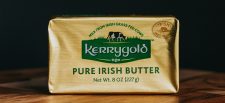UK inflation has reached 3.4%, with food and drink inflation falling from 7% to 5% according to the Office for National Statistics (ONS).
The food and drink inflation rate is the lowest annual rate since January 2022, easing for the 11th consecutive month from a recent high of 19.2% in March 2023.
ONS said that the annual rates for most types of food product had eased between January and February 2024, with bread and cereals seeing the largest effect. It said that the product’s prices had risen 0.3% between the two months, compared to a rise of 2.3% between January and February 2023.
Milk, cheese, eggs, meat and vegetables all saw inflation easing, with oils and fats the exception, seeing a rise from 8% in January to 8.3% in February 2024.
Karen Betts, chief executive of the Food and Drink Federation, said: “It’s good to see food and drink inflation continue to fall, to 5% in February from 7% in January. This reflects prices stabilising across supply chains, including energy, alongside manufacturers’ continued and sustained efforts to keep prices down for shoppers.
“Food and drink price inflation should continue to ease in the coming weeks. But some underlying factors are acting against this, from rising labour costs to erratic weather patterns, like this winter’s heavy rainfall across the UK which is impacting agricultural crop yields.”
Betts continued: “Investment in our industry is also worryingly low if the UK is to be confident in its food security. And the Government is making UK food and drink less attractive to invest in with its insistence on UK-wide ‘not for EU’ labelling.
“This is an expensive and unnecessary policy that will particularly hit small businesses and exports, and we’re urging the Government to reconsider. There are good, digital alternatives if the Government wants to monitor food movements in the UK, which in time could also be adapted to ease checks with the EU.”
BRC says Government “must not be complacent”
Responding to the inflation figures, Kris Hamer, director of insight at the British Retail Consortium, said: “After a rocky start to 2024, inflation is once again on its way down.
“Food inflation fell once again to its lowest rate since January 2022, as retailers continue to deliver the best service to their customers and communities. Households benefited from falling prices of fish, crisps and jam.
“While today’s inflation figures will be good news for consumers, Government must not be complacent. Significant costs on the horizon may put renewed pressure on overall inflation in the near future; these include a 6.7% rise in business rates, and reforms to the packaging levy and electrical takeback schemes, all in the context of the biggest rise to NLW on record. This will limit investment and drive up costs at a time when many families are still facing a higher cost of living.”
Commenting on a fall in food prices but national living wage increases “set to impact industry” later in the year, Mark Lynch, partner at consumer finance company Oghma Partners, said: “The rate of food price increases continues to drop with the February 2024 figures showing the annualised rate of food and non-alcoholic beverage inflation at 5.0% vs 6.9% in the prior month. The decline in the rate of increase is a result of the easing of some cost pressures across the food industry, including food raw materials and energy and the anniversary of increases of last year.
“Unfortunately, the cost pressure story is not over yet. April 2024 sees the introduction of a 9.8% increase in the National Living Wage, not only will this impact the lowest paid in the food industry but, it has a ripple impact across higher paid employees as differential in wage rates are sought to be maintained. We suspect that, as a result, food inflation will be a bit stickier than hoped this year.”









